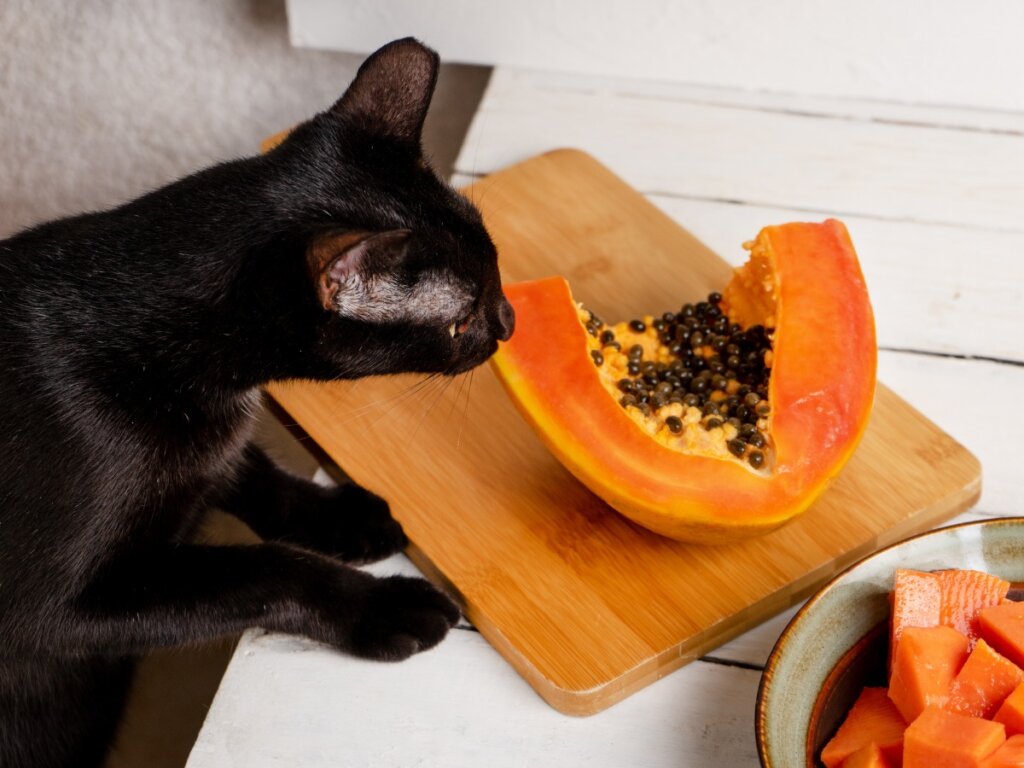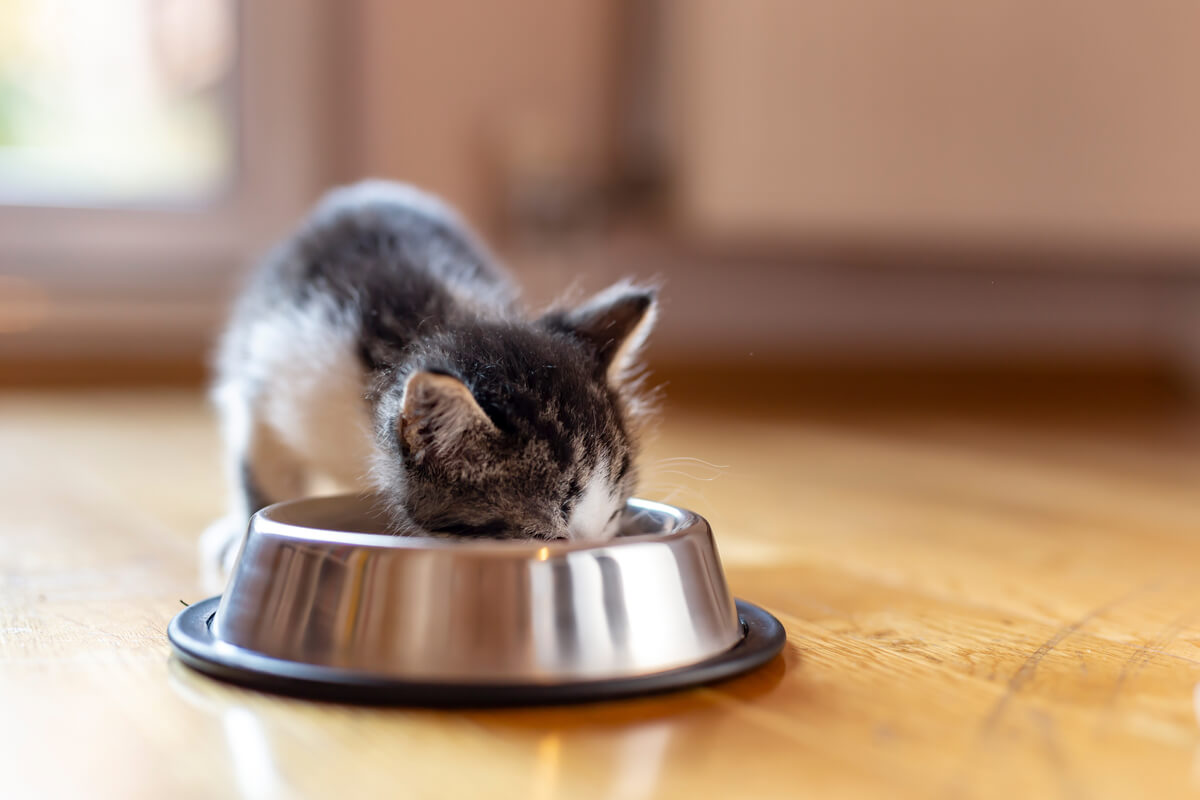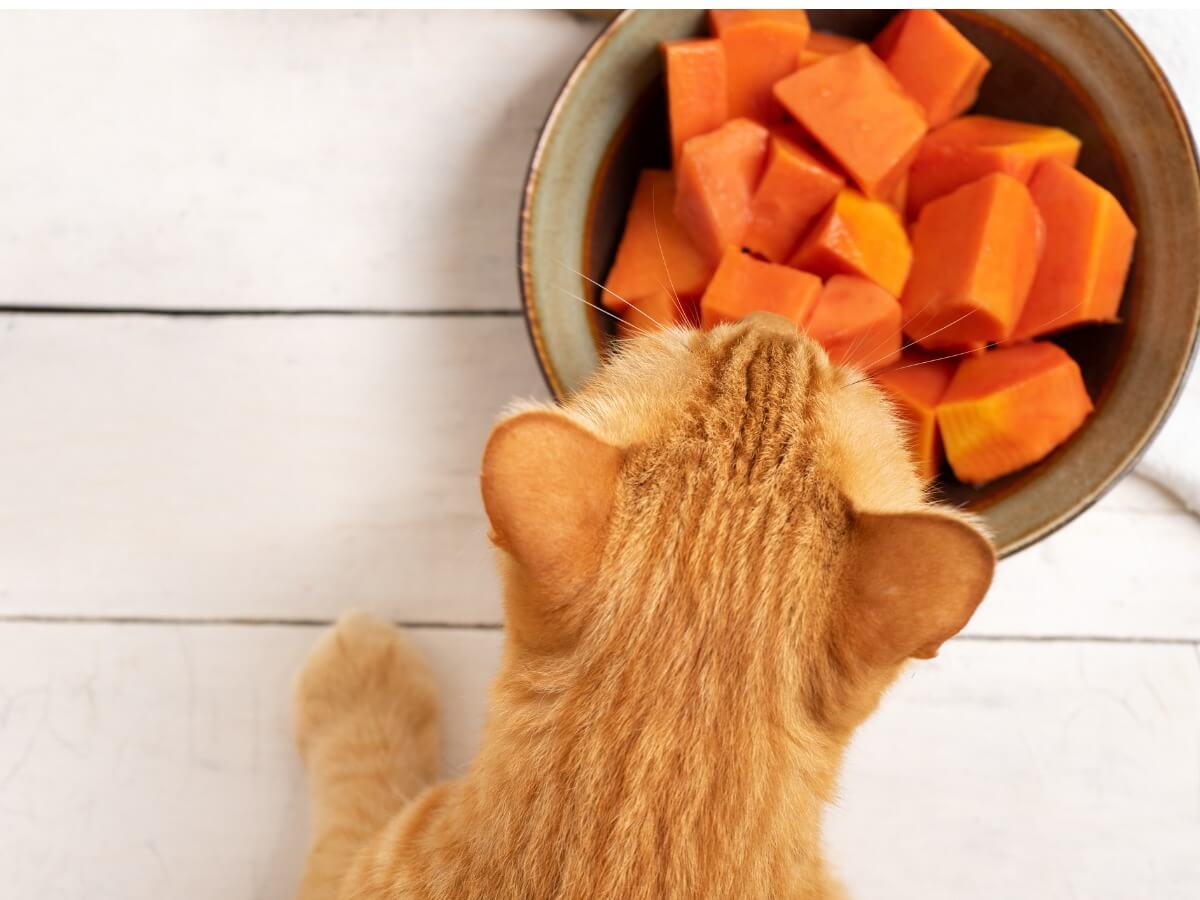Papaya for Cats: Is It Recommended?
Fruit is a good ally to strengthen the health of felines and papaya is conceived as part of their diet. Would you like to know its benefits?

Cats are carnivores by nature. Therefore, they need to eat animal protein and this should make up 50% of their diet, ideally. However, to add variety to your diet, you can complete their meal with some fruits and vegetables. Now, the question is, which fruits are suitable? Find out all about papaya for cats!
First, let’s make something clear: cats can eat fruit, but they don’t need them to survive, since the main nutrients are obtained from meat and fish. This leads to the conclusion that fruits and vegetables should be provided in the cat’s diet in a moderate way.
Still, fruit has many health benefits for felines. For example, it provides water to keep them hydrated. Similarly, a refreshing fruit suits them well in the summer season. On this occasion, we’ll have a look at some virtues of papaya for your cat.
Cat feeding
Since cats were domesticated, they have always adapted to a lifestyle based on hunting. That’s why their diet was based on consuming the prey they hunted. Their digestive system developed to accommodate that wild lifestyle, and likewise, their nutritional needs continue to depend on the meat of animals to survive.
It’s very important to make it clear that cats, being carnivores par excellence – even more so than dogs – can’t put up with a diet low in protein content. Ideally, 50% of your diet should be pure protein and almost the entire remaining percentage animal-based fats. Unfortunately, some feed manufacturers lower their costs by adding carbohydrates.
In addition, cats have a more sensitive olfactory system than humans – 14 times more in fact. In this way, smelling what they’re going to eat is a process that every cat does before they tuck in. If your feline is suspicious before putting some food in their mouth, it’s because they’re trying to check if it’s edible.

Cats reject new flavors
When a cat arrives new to a place, it feels disoriented and restless. Therefore, its eating habits can’t be changed abruptly. What’s recommended is that, for 10 days, you should keep the normal diet the cat was used to. Any food transition should be gradual.
In the case of fruit – as cats reject new flavors – the idea is to give the pet small portions, so that it gets used to the new flavor. Consequently, papaya in small pieces is ideal for the animal to absorb all the vitamins, fiber and minerals that this food provides.
Properties of papaya for cats
Papaya for cats is an excellent tropical fruit for the health of these felines. Its benefits are the following:
- Papaya contains an enzyme (papain) that aids in the digestion of protein for the cat. As studies indicate, this property is known as proteolytic.
- It can be easily cut into pieces, therefore, the cat with its sharp teeth will be able to chew and enjoy it.
- Papaya has a good amount of dietary fiber and is low in calories, which are recommended for the cat’s body.
- Papaya has a good amount of sugar. Therefore, it must be given in moderation so that the cat doesn’t develop diabetes.
It’s important to note that, when serving the cat the papaya, you must remove the seeds. If you don’t, they may get a stomach ache.
What other fruits can be given to the cat?
In addition to papaya for cats, there are other fruits and vegetables that are rich in vitamins, fiber, and with antioxidant properties. For example, we can cite mango, coconut, pineapple, and banana. These foods can help the proper functioning of the cat’s intestinal flora, and, at the same time, provide it with nutrients and water.
Temperature and texture of their food
As felines don’t have the ability to chew their food well, the moisture in their food will play an important role in their digestion. Consequently, papaya for cats must be fresh and, in general, shouldn’t be frozen. Similarly, the soft texture of the fruit allows the cat to handle it well with its claws.
Regarding temperature, most cats prefer their food to be around 35 degrees Celsius. The reason for this preference is because that’s the temperature of their prey when caught outside the house. Even so, with respect to papaya, what matters here is that it’s fresh so that the cat can stay hydrated and adapt to a portion of food that provides health benefits.

Cats can eat papaya, but always as something sporadic, or as a treat. As we’ve said, animal protein should always be their main energy source.

